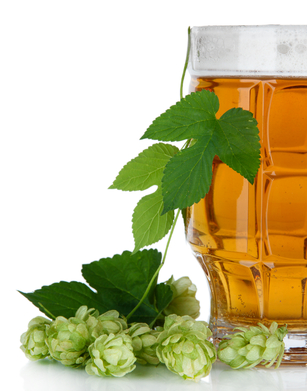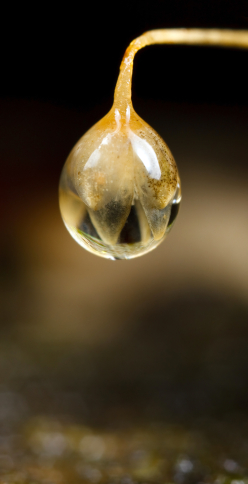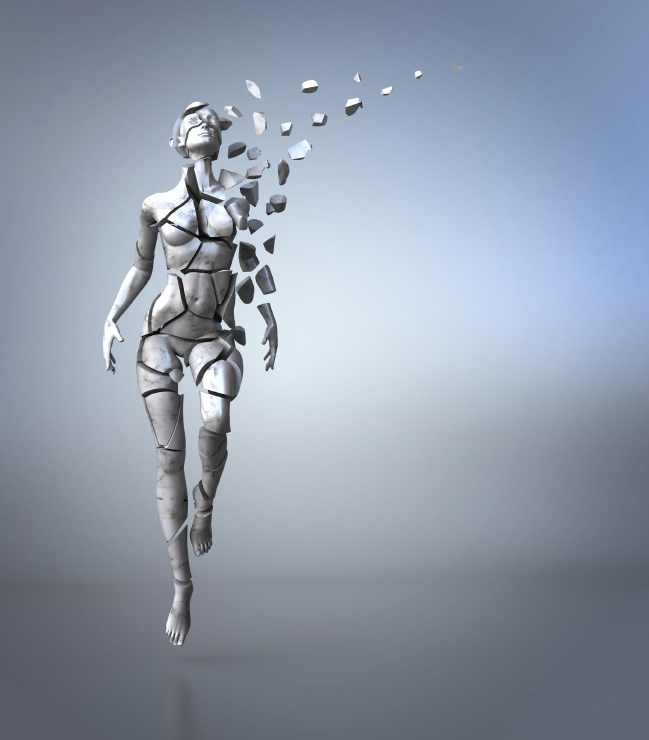Newsflash: hot flashes and soy…more on genistein
There’s some exciting news on the soy isoflavones front: for the first time, researchers have shown that a synthetic formulation of genistein, a plant-based estrogen component of soy, may actually reduce both the frequency and severity of hot flashes. Genistein is an interesting isoflavone, in that studies have linked it to some truly potentially important benefits, including preventing or reducing heart disease risk and attenuating bone loss in menopausal women. While the verdict is still out on its role in these conditions, it does appear to influence hot flashes and only in the best way possible! Moreover, this is the first time that a synthetic formulation has shown to have some degree of benefit in this regard.
Granted, this is a small study of only 84 menopausal women, 40 of whom took synthetic genistein for 12 weeks and 40 who took a sugar placebo tablet. The results? By the study’s end, women taking 1, 30-mg capsule daily reduced the number of hot flashes by half (51%, from about 10 per day to 5 per day) and also experienced significant declines in how long they lasted. The synthetic formulation, which was standardized, was also shown to be safe and did not detrimentallly impact the lining of the uterus. Notably, however, the researchers did note that there are not enough data to recommend isoflavones to women who’ve had breast cancer or at high risk for developing, even though current data suggest that exposure does not adversely affect breast tissue density or cancer cell proliferation, meaning that it is likely that with more study, they will ultimately prove safe for use in breast cancer patients.
Your key take-away is that there may be a viable option for women who are flashing but want to stay away from hormones. However, this is what we still need to know:
- Will genistein work on larger groups of menopausal women?
- Is formulation important?
- Is the 30 mg dose the lowest dose that will confer these sort of benefits?
- Are there any other factors that these women had in common that might be influencing outcomes?
As with any novel data like these, it’s great to be cautiously enthusiastic. Stay tuned!
Read MoreAre hops the key to relieving menopausal symptoms?
The other day, a colleague pointed me to an Andrew Weil piece on hops and menopause. And while I’ve not checked out the association lately, I did write a few pieces over the years about the potential benefits of hops and hop extract for relieving hot flashes and even boosting bone health. So, I took a gander over at the National Library of Medicine database and ran across a minireview from 2013. Here’s a bit of information for those of you who enjoy a beer or two.
Hop extract (better know in scientific circles as Humulus lupulus) has had a long history of use as a medicinal herb, especially for gynecologic conditions. It is even recognized by the European Medicines Agency, which has published a monograph outlining its safety and effectiveness. But even more importantly, hops evidently contains a subclass of flavonoids — plant metabolites — that have been shown to be the most potent phytoestrogen known to date. Clinical studies in women suggest that it can offer some relief from hot flashes, help prevent osteoporosis and impact sexual desire. And the fact that it is the ‘most’ potent? It’s interesting because most people don’t realize that to truly benefit from genistein, the most potent phytoestrogen derived from soy, one must be exposed to it throughout their lifetime. On the other hand, studies of 8-PN show that it is quickly absorbed and blood levels can also be reached fairly quickly so that women can benefit relatively shortly after taking a supplement. Less clear is the proper dosage need to alleviate menopause complaints. This hops extract has also been studied in vaginal gel form for vaginal atrophy, although no firm conclusions could be drawn for that use.
So far, the benefits of 8-PN appear to be limited to hot flashes, bone health and sexual motivation. The data on safety are less robust.
Will drinking beer help your hot flashes? The answer isn’t clear. But I still believe that there is hope for hops.
Read MoreWednesday Bubble: Soy takes a hit (again). But what about S-equol?
Soy is back in the news again, with newly published data suggesting that isoflavones may not be particularly effective when it comes to menopausal symptoms. But I can’t stress enough on this blog that sources are as important as substance; in other words, not all sources are equal and neither are the women who use these alternatives.
So, let’s talk again about S-equol. But first, a bit of context is needed.
We know that soy isoflavones, primarily genistein, daidzein and glycitein have been suggested as an effective strategy for combating menopausal symptoms such as hot flashes or night sweats. The beneficial effects of soy are believed to be associated with the ability to soy isoflavones to attach themselves to estrogen receptors. Importantly, our brains contain certain estrogen receptors in hippocampus, which is responsible for consolidating both short and long-term memory and spatial navigation. Moreover, both genistein and daidzein have been shown to have a particular affinity for the very type of estrogen receptors that reside in the hippocampus, which is why researchers have been so interested in determining if ingesting soy can help combat the natural decline in memory and cognition. While findings have been mixed, some women appear to be better metabolizers of S-equol, a metabolite of a major soy isoflavone called daidzein. It has a particular affinity for estrogen receptors and possesses some estrogen-type activity of its own. S-equol is produced in the GI tract however the ability to actually manufacture it depends on the presence of certain microflora. Consequently, only 30% to 60% of individuals are actually able to produce S-equol on their own (although this figure is believed to be higher among Asians and vegetarians).
I’ve been writing about S-equol for a number of years and you can revisit those posts here. Interest in S-equol is in part, related to its potential for augmenting the benefits of isoflavones; in fact, it is possible that women who are naturally producers of S-equol actually experience greater effects from soy products, and this is especially true when it comes to bone health. Hence, vasomotor symptoms — night sweats and hot flashes — aside, you may not want to give up on soy just yet.
So let’s talk bone health. It’s so critical as we age.Declining levels of estrogen are a primary cause of bone loss and resulting osteoporosis in women; indeed, one in five American women over the age of 50 have osteoporosis and about half will experience a fracture in the hip, wrist or spine as a result. What’s more, because osteoporosis is silent in its early stages, causing no symptoms, it’s critical that bone loss is halted or at least slowed either before or during the most critical phases strike. There is no time like the present to take preventive measures, even if you are in your 30s and 40s.
Where does S-equol fit in?
Last year, researchers demonstrated the daily S-equol supplements taken by women who are not naturally producers of S-equol, may improve bone metabolism and attenuate bone loss. And I reprinting this information because it’s too early for a soy verdict.
In this 1 year study of 356 healthy, postmenopausal Japanese women between the ages of 41 and 62, daily intake of 10 mg S-equol via supplement markedly reduced markers of bone resorption in blood and urine compared to women taking placebo pills or 2 mg or 6 mg of S-equol daily. In fact, in women taking the 10 mg dose for a year, declines in a urinary marker of bone resorption (i.e. DPD) were roughly 21% greater compared to placebo. Measures of whole body bone mineral density also showed that S-equol supplementation protected against bone loss, although not to the extent as bone resorption. These results remained even after changes in height, weight, body mass index, lean and fat mass were accounted for. No participant experienced serious side effects from taking S-equol and hormone levels were not adversely affected.
Does this mean that you should rush out and purchase S-equol supplements?
One of the primary limitations of this study is that the process of bone recycling can take as long as 18 months and the time required to complete a cycle may actually increase with age. Thus, the duration of time that the women were studied might be too short to draw any definitive conclusions. Hence, you may want to wait before you start taking S-equol. However, the evidence that’s building continues to put the weight on the benefits versus risks side. Only time will tell. Meanwhile – remember that the source of S-equol is important. If you are going to look for supplements, go for products that state that they are standardized on the label. Food sources, e.g. tofu, are always a good bet but again, not every woman will metabolize soy the same way. Still, here’s to yourhealth. Keep on doing all you can do to keep the faith and stay the course.
It ain’t over til the fat lady stops sweating!
Read MoreWednesday Bubble: your brain on soy
Aging and estrogen. Gotta love it. It can signify the loss of reproduction, skin elasticity, vaginal lubrication, bones and even parts of our brain, at least hypothetically. Yet, can ingesting soy help improve attention, focus, problem solving and memory? A newly published study in Neurology journal counters claims that it can, but adds further evidence that certain factors may influence benefits, such as reproductive age or if menopause comes on naturally or not.
A bit of context is needed. We know that soy isoflavones, primarily genistein, daidzein and glycitein have been suggested as an effective strategy for combating menopausal symptoms such as hot flashes or night sweats. The beneficial effects of soy are believed to be associated with the ability to soy isoflavones to attach themselves to estrogen receptors. Importantly, our brains contain certain estrogen receptors in hippocampus, which is responsible for consolidating both short and long-term memory and spatial navigation. Moreover, both genistein and daidzein have been shown to have a particular affinity for the very type of estrogen receptors that reside in the hippocampus, which is why researchers have been so interested in determining if ingesting soy can help combat the natural decline in memory and cognition. While findings have been mixed, some women appear to be better metabolizers of S-equol, which is related to daidzein, produced in the gut and targets estrogen receptors in beneficial ways that other soy isoflavones do not. If you click on the links posted above, you will find a wealth of information on soy and the research that has been done.
In this particular study, healthy, postmenopausal women received either 25 g daily of isoflavone-rich soy protein (more than 3/4 of which contained genistein and daidzein) or milk-protein daily; both were offered in the form of a powder or bar. Over the next two and half years, the participants visited the clinic at various intervals to participate in tests that measure their cognitive skills, including:
- Executive function (working memory, expression, general intelligence), and,
- Verbal learning, verbal memory and visual memory.
Although the women were not required to change anything about their diet, they were asked to refrain from taking soy supplements over the study course.
The findings? Researchers failed to observe any differences in cognitive function between women taking soy and women taking milk protein, even though scores did improve over the two+ year time period. Yet, they did note differences in improvements in visual memory scores, with women in the soy isoflavone group better able to recall faces both immediately and with a short delay compared to their milk protein peers. The group of younger, postmenopausal women in the study did not appear to have any advantages over the older women (note that age range was as broad as 49 to 94 years).
So, what to make of this? Is your brain on soy an improvement? Apparently, not really. What the researchers do say, however, is that surgical menopause may eventually cause a larger decline in cognitive function over time (these group of women actually showed a worsening in cognition regardless of whether or not they took soy). They also note that soybeans contain active constituents other than isoflavones (e.g. lignans) that may boost or detract from isoflavones effect on cognition.
Still, there is a wee bit of a silver lining. Although it’s true that if you are seeking a better functioning brain, you may wish to look elsewhere, a high soy diet can be consumed without fear of any adverse effects on memory skills that are associated with dementia in later life, and may possibly even improve them. The verdict is still out for women who are naturally high S-equol producers. In so far as hot flashes and night sweats? The evidence looks much better.
Estrogen’s a bitch, isn’t it? But who says that the bitch can’t be tamed or at least, kept at bay?!
Read More
Soy…revisited
 It’s been a rough ride for soy, with studies often at odds regarding its effectiveness in ameliorating or preventing hot flashes. Some reviews have shown that soy isoflavones, in particular S-equol and genistein can alleviate hot flashes while others fail to finding anything conclusive. Still, the original observation that Japanese women appear to suffer less frequently from hot flashes and have a high consumption of soy isoflavones has led researchers to keep trying to tease out the benefits of soy.
It’s been a rough ride for soy, with studies often at odds regarding its effectiveness in ameliorating or preventing hot flashes. Some reviews have shown that soy isoflavones, in particular S-equol and genistein can alleviate hot flashes while others fail to finding anything conclusive. Still, the original observation that Japanese women appear to suffer less frequently from hot flashes and have a high consumption of soy isoflavones has led researchers to keep trying to tease out the benefits of soy.
I am glad that they have. In fact, in a study published online in Menopause just a few weeks ago, researchers reported that an extensive review of 19 scientifically sound trials has shown that soy isoflavones are significantly more effective than placebo in reducing both the frequency and severity of hot flashes.
Here’s what you need to know:
- 19 trials were included for analysis and a variety soy isoflavone supplements in different doses ranging from 30 mg to 135 mg daily were studied. Some of these were natural formulations and others, chemically synthesized to match key ingredients believed to have a health effect.
- Hot flash severity and frequency were examined in women that were either premenopausal, perimenopausal or menopausal (i.e. postmenopausal) although definitions used to define this group differed between studies.
- The number of women in these studies totalled over 1,200.
The results showed that taking 30 to 80 mg soy isoflavones daily for 6 months to a year significantly reduced the frequency of hot flashes by roughly 17%. Moreover, the 10 trials analyzed for hot flash severity showed a significant reduction by as much as 30%. In both cases, these figures increased depending on how the researchers teased out and analyzed the data.
The researchers say that even though there is a common perception that results from soy trials have been mixed, there has been a “consistent and clear pattern in favor of isoflavones over placebo” when properly plotted on a graph. Moreover? The scientifically designed studies that were included in their analysis helped to insure that all populations, including women with breast cancer, were included. Additionally, they analyzed studies that were as short as 6 weeks in duration, namely to determine if women with cancer not receiving treatment would respond the same as healthy women. Additionally, there is some indication that the effectiveness of soy actually increases over time with continuous use.
What about the type of soy isoflavone? This review actually shows that genestein is more effective than daidzein for alleviating hot flashes.
The key take away is that for women who don’t want to use hormone replacement or are ineligible to do so, there is a scientifically proven effective alternative: soy. And while soy may disturb the GI tract in some women, it is actually quite safe, even among women with breast cancer.
So far, so good. The next step is to determine which factors matter most to gain benefit, e.g. dose, formulation, hot flash frequency and how long a woman needs to remain on treatment.
Read More









